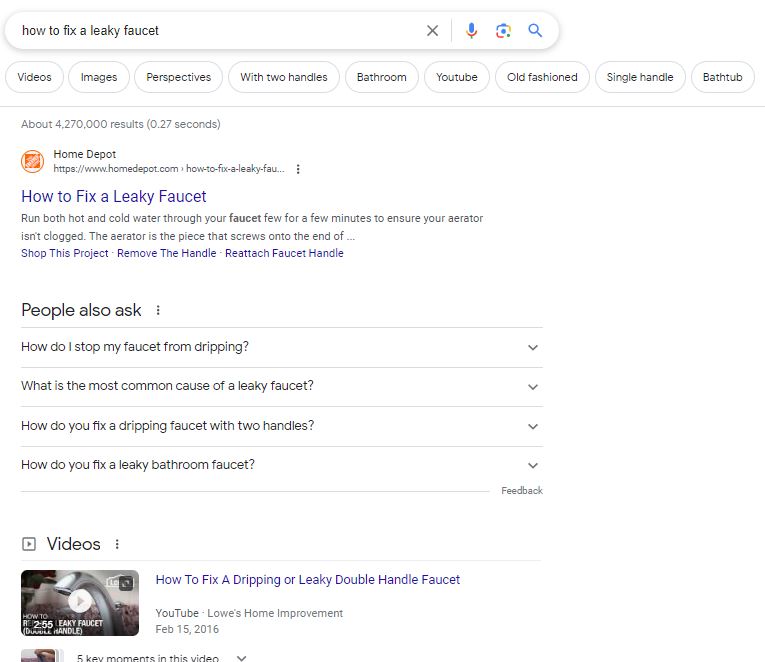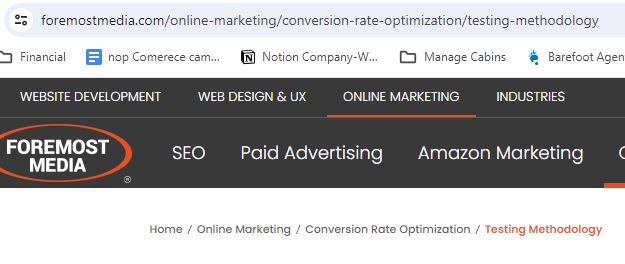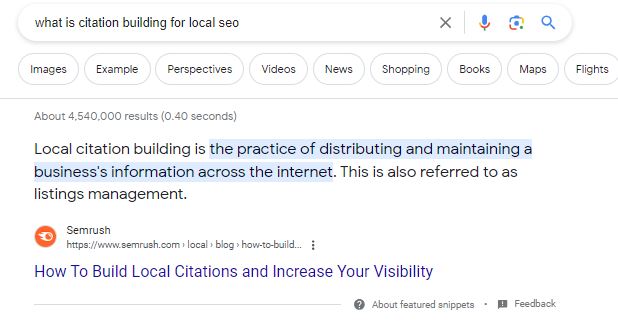In the evolving world of search engines, securing a top spot in search results has become more critical than ever. With Google's introduction of infinite scroll, the concept of "page one" has transformed, but the reality remains: users rarely scroll endlessly. The vast majority of searchers find what they're looking for within the top 20 results. This shift underscores the importance of a robust SEO marketing strategy. If your website doesn't rank within these coveted positions, the chance of attracting significant organic traffic diminishes greatly. In this blog post, we'll explore effective strategies to elevate your site's visibility, ensuring that it not only reaches the top 20 but also captivates the attention of your target audience.
In this comprehensive guide, you'll discover a range of key areas essential for enhancing your SEO marketing strategy. We'll delve into the importance of thorough keyword research, ensuring your content aligns with user search intent, and the impact of integrating compelling visuals. Furthermore, we'll cover optimizing multimedia elements for speed and SEO, crafting effective title tags and meta descriptions, and the art of creating SEO-friendly blog titles. We'll also explore strategies for URL optimization, internal linking, and improving readability. A special focus will be placed on techniques to optimize content for Google's featured snippets and the benefits of reoptimizing existing content. This guide aims to equip you with the knowledge and tools to secure a top spot in search results, drive more traffic, and enhance your online visibility.
Mastering Keyword Research: A Deep Dive into Audience Insights and SEO Strategies
In the realm of SEO marketing, effective keyword research is essential. This process involves a deep understanding of your target audience's language and search behaviors. Here's a more detailed exploration:
- Keyword Suggestion Tools: Utilize tools like SEM Rush for insights into both high-traffic and niche keywords. These tools can identify terms that are relevant to your industry, helping you target the right audience.
- Competitor Ranking Analysis: Investigate the keywords your competitors are ranking for. This can reveal opportunities they might have overlooked and inform your SEO strategy.
- Identifying Fringe Keywords: Focus on keywords where your site is already ranking, but not in top positions. Improving these rankings can be more efficient than starting from zero.
- User Perspective in Keyword Selection: Consider how your users might refer to your products or services. Industry terms might differ from user search terms. For example, while you might offer 'facial tissues', users might search for 'wipes' or 'Kleenex'. Utilizing a thesaurus can help find synonyms and related terms.
- Analyze Search Results For Your Selected Keywords: It’s crucial to analyze the type of search results Google is displaying for your selected keywords. If Google predominantly returns shopping sites for a keyword, and your site doesn't offer a shopping option, it might be wise to reassess your chosen term. This insight can guide whether to adjust your keyword strategy or consider expanding your website's capabilities, such as adding a shopping feature. Tailoring your approach based on the nature of search results ensures alignment with user expectations and search engine trends.
Moreover, it's important to differentiate between short-tail and long-tail keywords. Short-tail keywords, like "playground," are broad and attract high search volumes but less targeted traffic. Conversely, long-tail keywords such as "commercial playground equipment" are more specific. They attract less traffic but are more targeted and relevant, leading to higher conversion potential. By targeting a long-tail keyword, you inherently optimize for shorter terms within it, like "commercial" and "playground," thus increasing visibility across related searches. This approach creates a broader SEO footprint while maintaining focus on your core audience and services.
Harmonizing Content with User Search Intent: The Key to Enhanced Relevance and Ranking
When aligning content with search intent, it's vital to understand and match what users are actually searching for. This means analyzing and interpreting the underlying intent behind search queries. For instance, someone searching for "how to fix a leaky faucet" is likely looking for a step-by-step guide or a DIY tutorial, not a sales page for plumbing services. It's essential to ensure that your content directly addresses the needs and expectations of your audience based on their search queries. By doing so, you not only improve your site's relevance and user satisfaction but also enhance its potential to rank higher in search engine results. This approach is fundamental in creating content that resonates with your audience and fulfills their search intent.

The search results above for "How to fix a leaky faucet" illustrate Google's intent to provide diverse and comprehensive answers. The presence of an article from Home Depot offers a direct, authoritative guide. The inclusion of videos suggests a demand for visual, step-by-step instructions, catering to those who prefer learning by watching. The "People Also Ask" section indicates common, related queries, providing a broader understanding of user concerns and interests around the topic. This variety in search results demonstrates Google's aim to cover different aspects of the query, ensuring users find exactly what they need, whether it's a quick answer, a detailed guide, or a visual demonstration.
To rank well for the term "How to fix a leaky faucet," it's important to consider the types of results Google favors. The variety in search results – including authoritative articles, instructional videos, and the "People Also Ask" section – indicates the diverse content formats and angles that are valued. The "People Also Ask" panel, in particular, offers insights into related questions and topics, which can be a goldmine for additional content creation. By understanding and aligning with these favored formats and exploring related queries, you can enhance your content's relevance and increase its chances of ranking well.
Enhancing Engagement and SEO with Visuals: The Power of Images, Videos, and Infographics
Incorporating visuals such as images, videos, and infographics plays a significant role in enhancing both reader engagement and SEO. Visual elements make content more engaging and easier to digest, encouraging visitors to spend more time on your site, which is a positive signal to search engines. Videos, in particular, can significantly increase the time spent on a page. Infographics are powerful tools for presenting data and complex information in an accessible format. They are also highly shareable, increasing the likelihood of backlinks. Optimizing these visual elements with appropriate tags and descriptions further boosts SEO, making your content more discoverable and enhancing overall user experience.
Optimizing Images and Videos for Improved SEO and User Experience
Optimizing multimedia elements like images and videos is crucial for improving loading times and enhancing SEO performance. For images, use formats like JPEG or WebP, which offer quality visuals at smaller file sizes. Always compress images before uploading them to your website to reduce loading time. With videos, consider hosting them on platforms like YouTube or Vimeo and embedding them on your site, which prevents slowing down your page load speeds. Additionally, use descriptive file names and alt tags for images, and provide captions or transcripts for videos, which can help search engines understand and rank your content better. These practices not only enhance user experience but also contribute positively to your site's SEO.
Maximizing Click-Through Rates: The Art of Crafting Title Tags and Meta Descriptions
Title tags and meta descriptions are critical components of SEO and can significantly influence click-through rates and rankings. An effective title tag succinctly summarizes the page content and includes relevant keywords. It should be engaging and descriptive, encouraging users to click on your link in the search results. The meta description provides a brief overview of the page's content, further enticing users to visit your site. While these elements don't directly impact rankings, they can influence user behavior, which in turn affects SEO performance. Crafting clear, concise, and compelling title tags and meta descriptions can improve visibility and drive more traffic to your site.
Striking the Perfect Balance: Crafting Copy Titles for Maximum Engagement and SEO Impact
Crafting engaging and SEO-friendly pages, articles and blog titles is a balancing act. Your title should be compelling enough to catch the reader's attention while incorporating relevant keywords for SEO. The challenge lies in creating a title that speaks to both the user's interest and search engines. It should clearly indicate the content's value and topic, encouraging clicks without resorting to clickbait tactics. An effective title can significantly impact the visibility and success of your content in search results, making it a key element in your SEO and content strategy.
Effective URL Optimization: Crafting Clear and Keyword-Rich Links for Better SEO
URL optimization is a key factor in SEO strategy. A well-crafted URL should be clear, concise, and include relevant keywords. This not only helps search engines understand the content of the page but also improves user experience. A descriptive URL gives potential visitors a quick insight into what the page is about, even before they click on it. Moreover, incorporating keywords into URLs can enhance your site’s visibility in search results. Avoid long, complicated URLs filled with numbers and characters, and aim for a structured, readable format that aligns with the content of your page.

As you can see from the screen capture above the URL structure from our page about Conversion rate optimization testing methodology helps both users and search engines understand what this page is about.
Maximizing SEO and User Experience: The Power of an Internal Linking Strategy
An internal linking strategy involves placing links in your content that lead to other pages on your same website. This approach is beneficial for SEO as it helps search engines discover new pages and understand the structure and hierarchy of your site. For users, internal links enhance the browsing experience by providing easy pathways to related content, keeping them engaged and on your site longer. This not only improves usability but can also positively influence your site's authority and ranking in search engines. Carefully chosen internal links ensure a cohesive and intuitive user journey, while bolstering your overall SEO efforts.
Securing the Spotlight: Strategies for Landing in Google's Featured Snippets
Optimizing for Google's featured snippets requires creating content that directly and concisely answers specific queries. Featured snippets often prioritize well-structured, succinct answers, such as bullet points or numbered lists, that directly address search queries. To increase your chances of appearing in these coveted spots, focus on answering common questions related to your niche. Use clear headings and organize your content in a logical, easy-to-follow format. By providing clear, authoritative answers and structuring your content effectively, you can enhance your visibility and position your website as a go-to source for valuable information.
Below is an example of a sinppet for the search term “what is citation building for local seo”:

Keeping Content Fresh: The Importance of Regularly Updating Your Website's Material
Regularly updating and reoptimizing old content is a key practice in maintaining an effective online presence. This involves reviewing and refreshing blog posts and other website content to ensure they remain accurate, relevant, and aligned with the latest SEO strategies. At Foremost Media, we adopt this approach by annually reassessing our content, integrating industry updates and new insights. This not only maintains the freshness of our website but also demonstrates our commitment to providing up-to-date and valuable information. Such a practice can significantly enhance the user experience and search engine performance, making it a recommended approach for all content creators and website managers.
Sealing Your SEO Marketing Success: Recap and Next Steps with Foremost Media
In conclusion, effective SEO marketing hinges on thorough keyword research, aligning content with search intent, incorporating visuals, and optimizing multimedia elements. Effective titles, meta descriptions, URLs, and internal linking strategies are vital. Appearing in Google's featured snippets and regularly updating old content can further enhance your SEO performance. At Foremost Media, we practice these strategies to ensure our content remains relevant and engaging. We invite you to explore our website for more insights and to contact us for expert guidance in unlocking your online potential. Let's work together to elevate your digital presence.
Learn More- Here is what to read next: